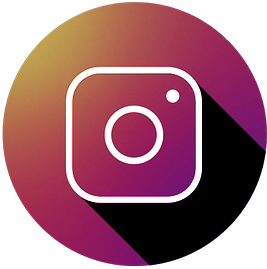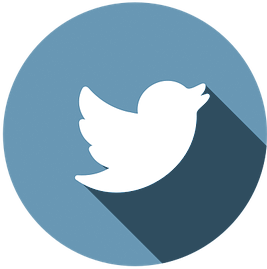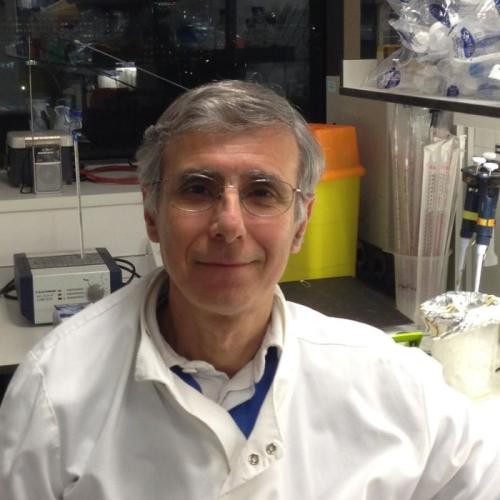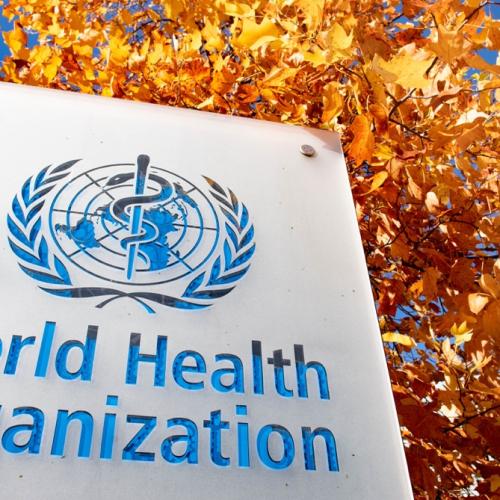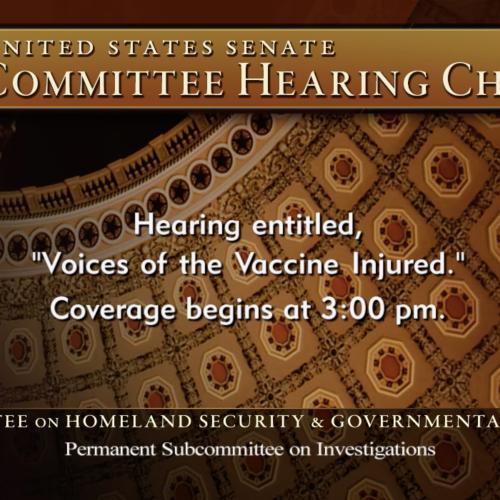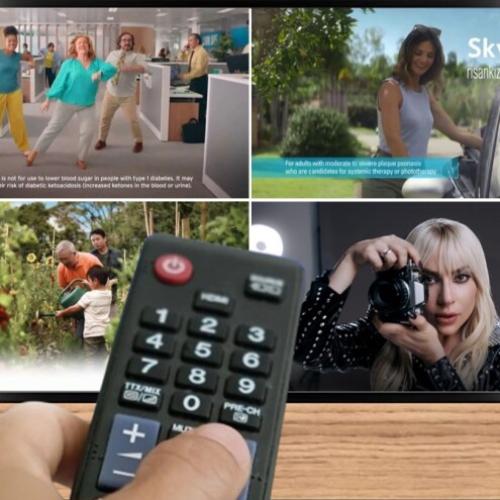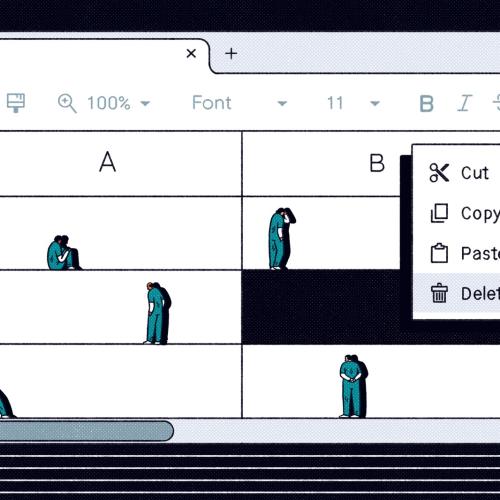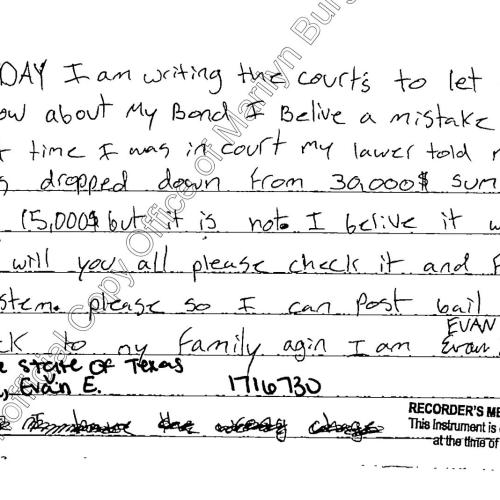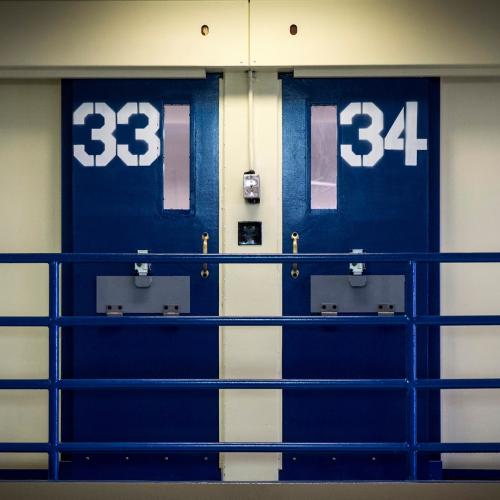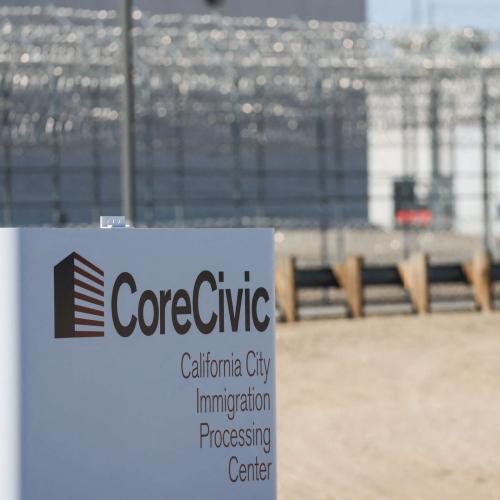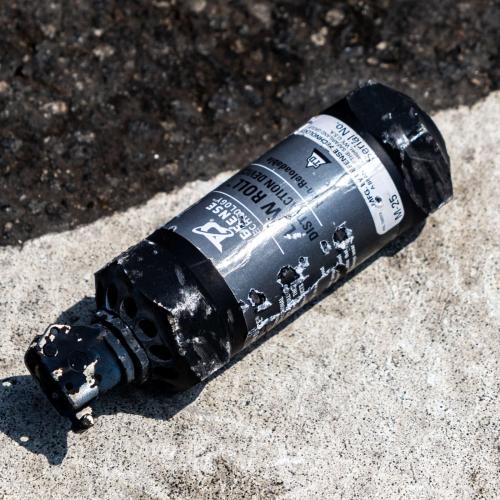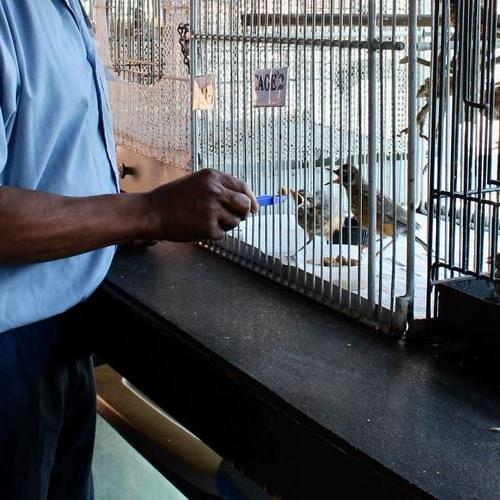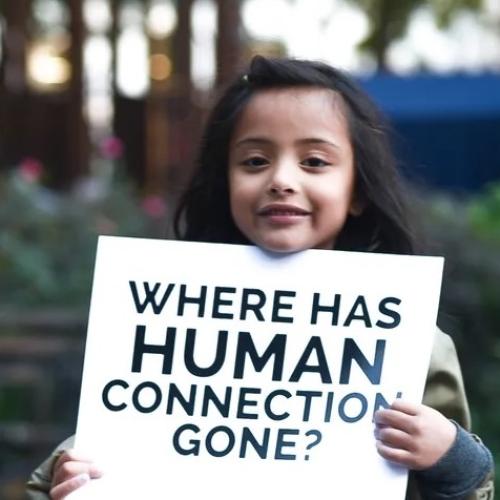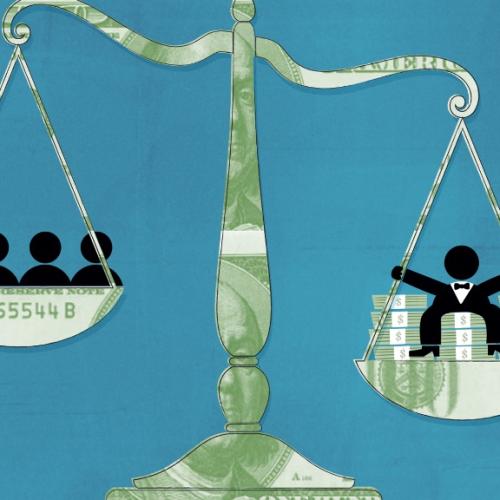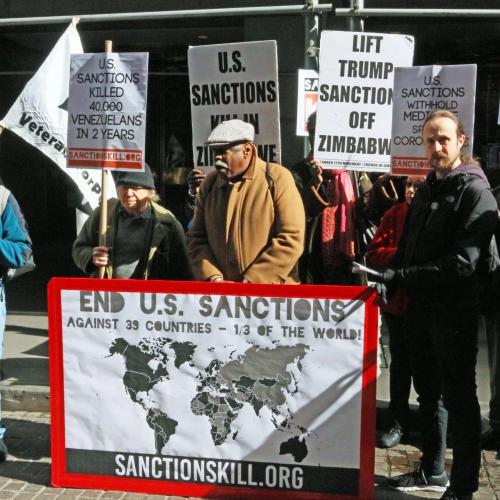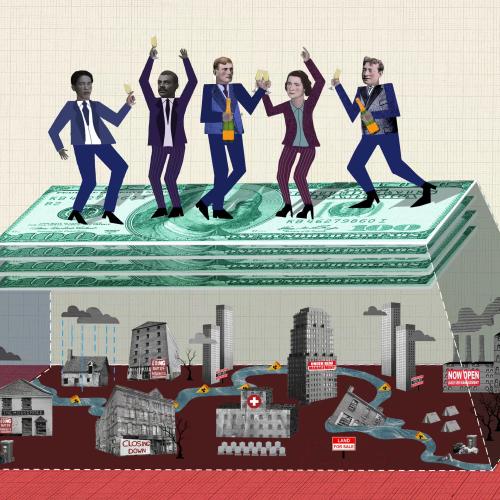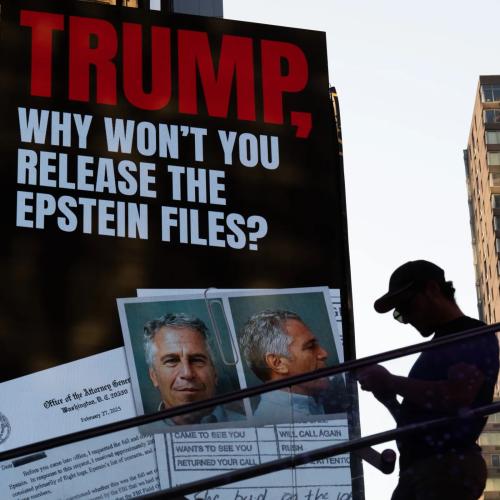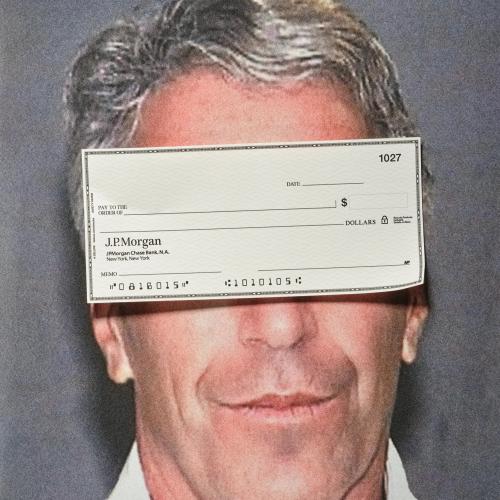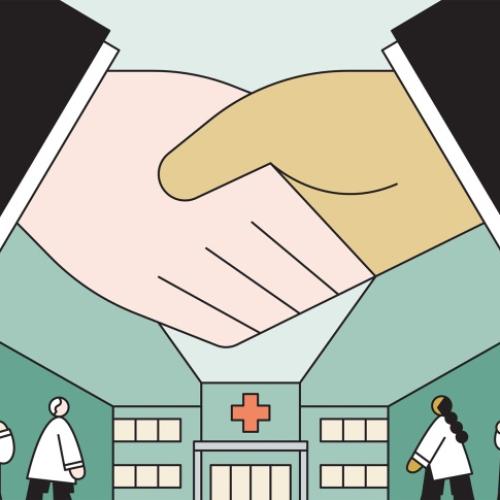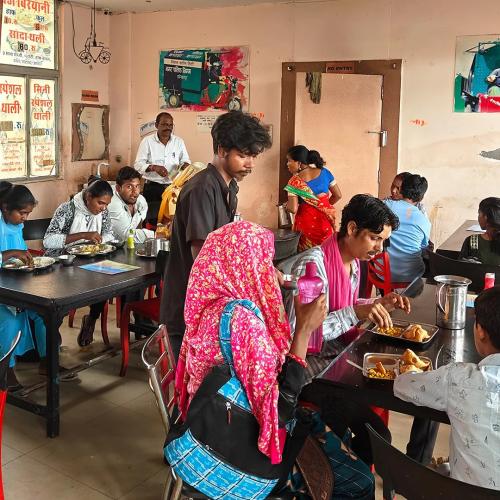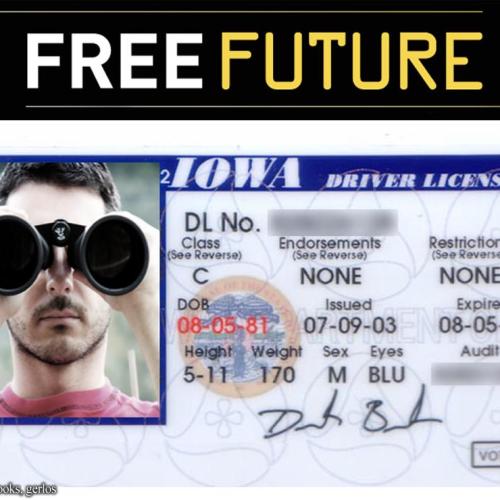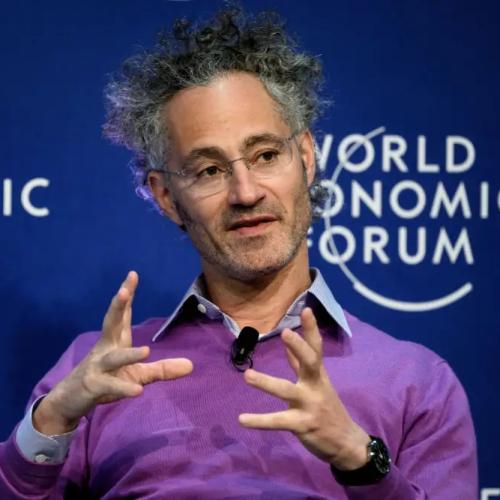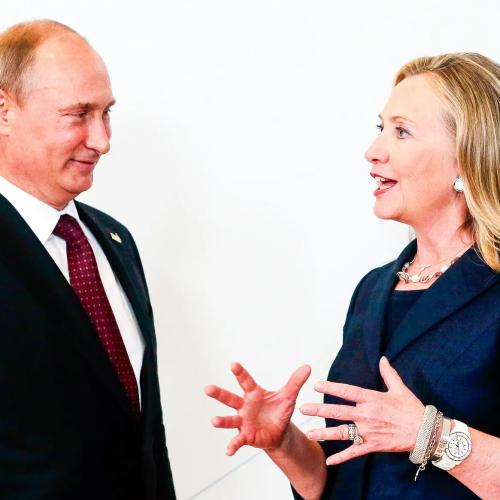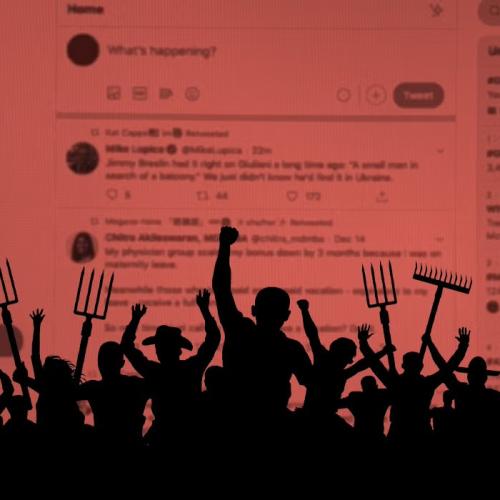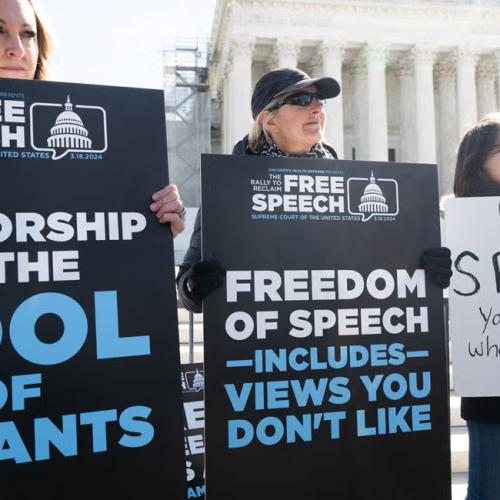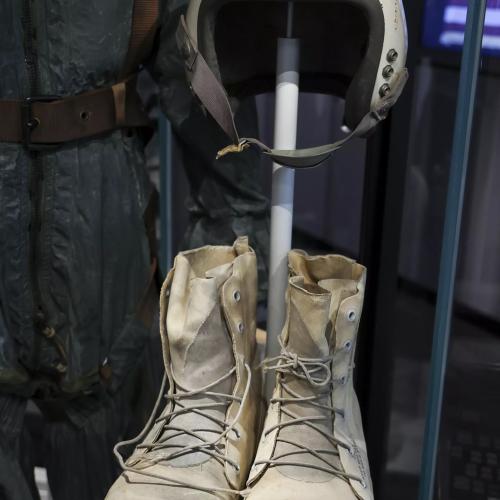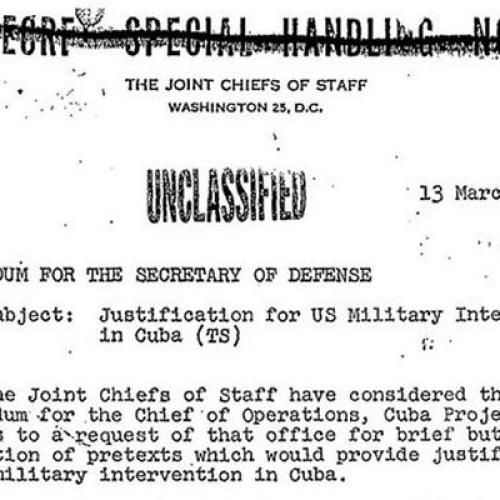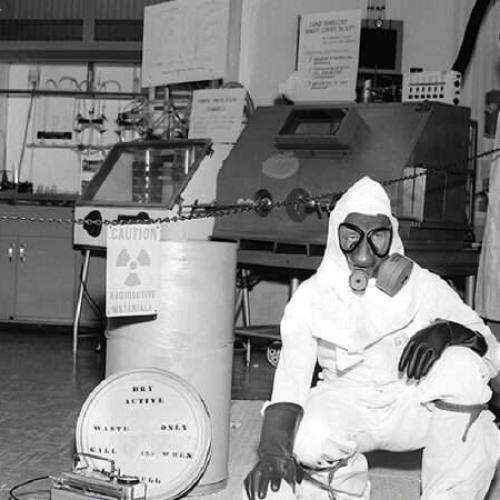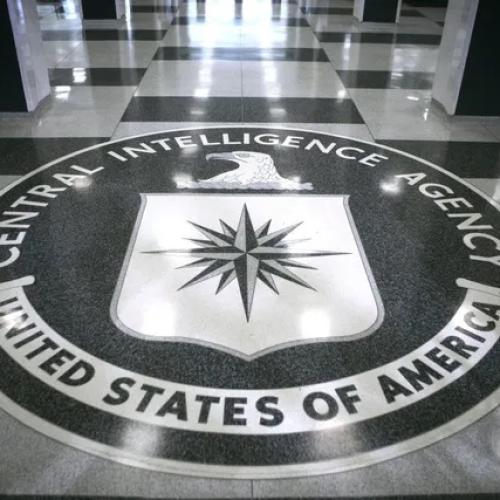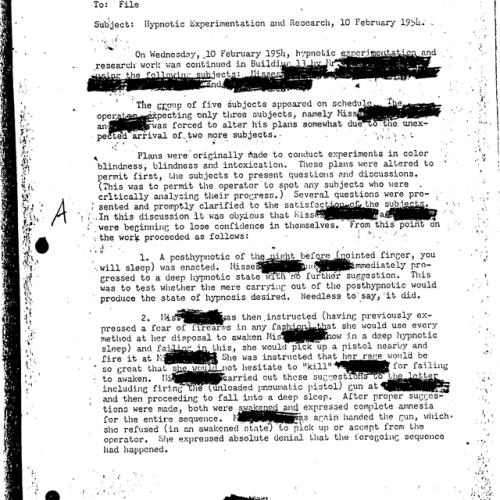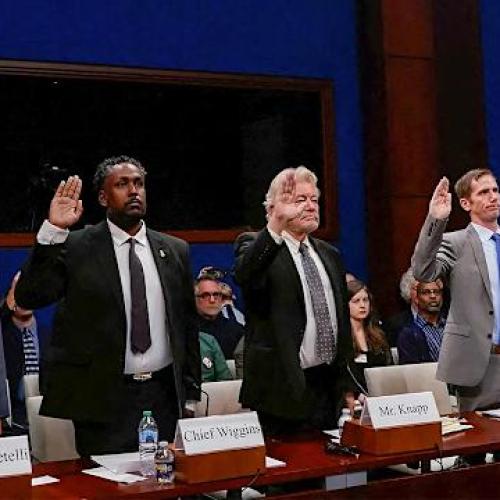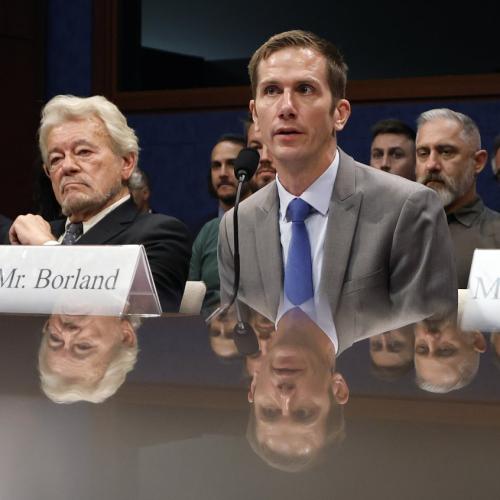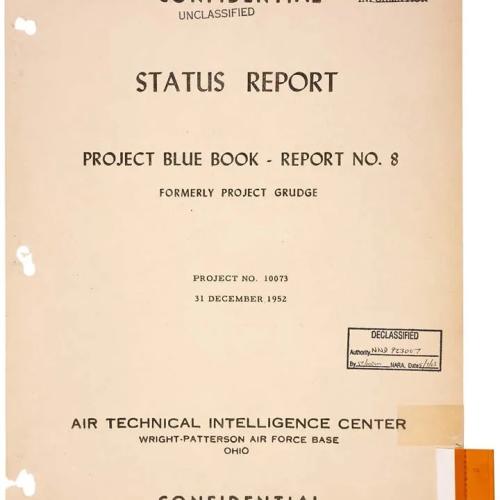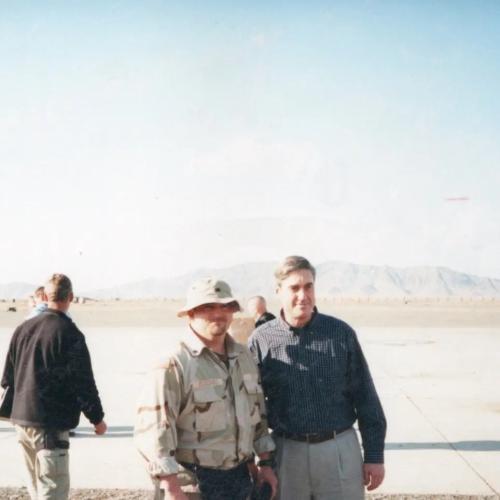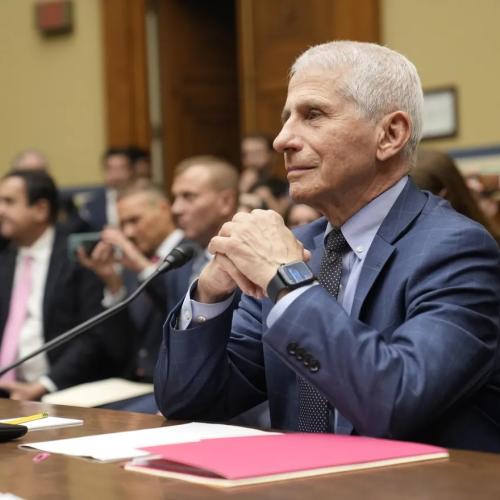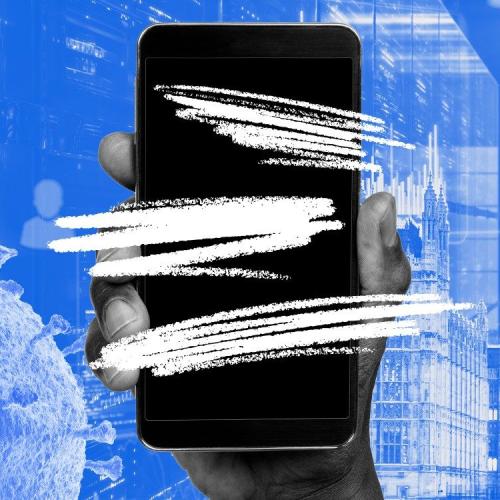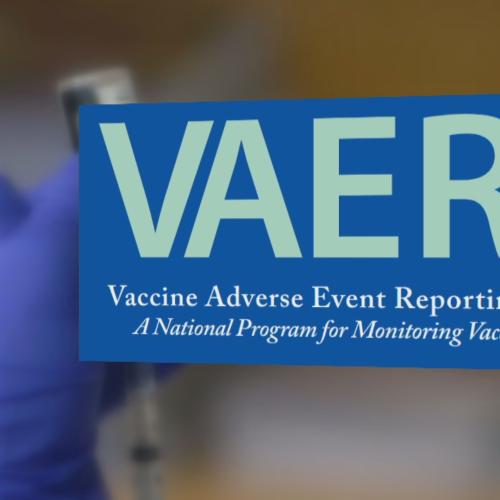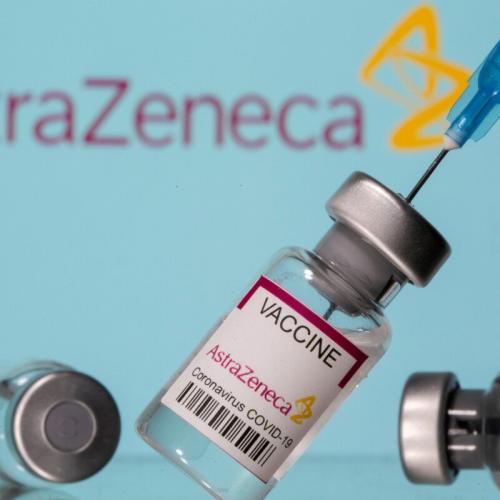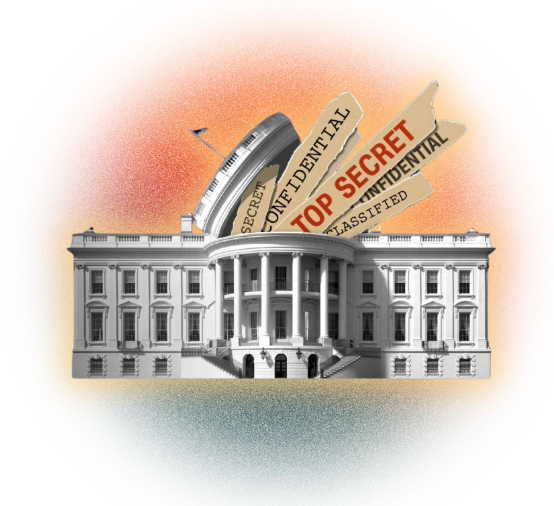COVID Vaccine Problems News Stories
Below are key excerpts of revealing news articles on COVID vaccine problems from reliable news media sources. If any link fails to function, a paywall blocks full access, or the article is no longer available, try these digital tools.
Pfizer chairman Albert Bourla told NBC’s Dateline host Lester Holt that the pharmaceutical company was “not certain” if the vaccine prevented the coronavirus from being transmitted, saying: “This is something that needs to be examined.” In a prime-time special titled “Race for a Vaccine” ... Holt questioned Bourla and other individuals involved in the development and distribution of the vaccine. In November, Pfizer announced that its vaccine candidate had been shown to be more than 90% effective at preventing COVID-19 and has applied for emergency use authorization from the Food and Drug Administration (FDA). The U.K. became the first country to approve Pfizer’s vaccine this week with the first round of immunizations expected to roll out next week. In August, Canada signed a deal with Pfizer for 20 million doses of the vaccine. In a list of interview highlights released before the special, Holt asked Bourla: “Even though I’ve had the protection, am I still able to transmit it to other people?” “I think this is something that needs to be examined. We are not certain about that right now with what we know,” Bourla responded.
Note: An MSN article reported that a 41-year-old Portuguese health worker died two days after getting the Pfizer vaccine, but then removed the article. Learn more about this death in this article. A Florida doctor also died after receiving the vaccine. This CDC report states “December 14–23, 2020, monitoring … detected 21 cases of anaphylaxis after administration of a reported 1,893,360 first doses of the Pfizer-BioNTech COVID-19 vaccine.” For more, explore the excellent, reliable resources provided in our Coronavirus Information Center.
If you experience severe side effects after getting a Covid vaccine, lawyers tell CNBC there is basically no one to blame in a U.S. court of law. The federal government has granted companies like Pfizer and Moderna immunity from liability if something unintentionally goes wrong with their vaccines. “It is very rare for a blanket immunity law to be passed,” said Rogge Dunn, a Dallas labor and employment attorney. You also can’t sue the Food and Drug Administration for authorizing a vaccine for emergency use, nor can you hold your employer accountable if they mandate inoculation as a condition of employment. Congress created a fund specifically to help cover lost wages and out-of-pocket medical expenses for people who have been irreparably harmed by a “covered countermeasure,” such as a vaccine. But it is difficult to use and rarely pays. Attorneys say it has compensated less than 6% of the claims filed in the last decade. In February, Health and Human Services Secretary Alex Azar invoked the Public Readiness and Emergency Preparedness Act. The 2005 law empowers the HHS secretary to provide legal protection to companies making or distributing critical medical supplies. The protection lasts until 2024. That means that for the next four years, these companies “cannot be sued for money damages in court” over injuries related to the administration or use of products to treat or protect against Covid.
Note: Dr. Carrie Madej lays out the case for transhumanism through these mRNA vaccines. Are these vaccines the beginning of a well hidden agenda using nanotechnology to control all humans through advanced technology? Don’t miss this powerful 20-minute video and do your own research as she suggests. For more along these lines, see concise summaries of deeply revealing news articles on coronavirus vaccines from reliable major media sources. Then explore the excellent, reliable resources provided in our Coronavirus Information Center.
Australia on Friday canceled a roughly $750 million plan for a large order of a locally developed coronavirus vaccine after the inoculation produced false positive test results for H.I.V. in some volunteers participating in a trial study. Of the dozens of coronavirus vaccines being tested worldwide, the Australian one was the first to be abandoned. While its developers said the experimental vaccine had appeared to be safe and effective, the false positives risked undermining trust in the effort to vaccinate the public. The Australian setback showed the missteps that can inevitably occur when scientists, during a pandemic that has killed more than 1.5 million people, rush to condense the usual yearslong process to develop vaccines into a matter of months. The trouble that arose with the Australian vaccine, developed by the University of Queensland and the biotech company CSL, was related to its use of two fragments of a protein found in H.I.V. The protein formed part of a molecular “clamp” that researchers placed on the spikes that surround the coronavirus and allow it to enter healthy cells. The clamp stabilizes the spikes, allowing the immune system to respond more effectively to the vaccine. The use of the H.I.V. protein posed no risk of infecting the volunteers with that virus, the researchers said. But the clamp generated the production of antibodies recognized by H.I.V. tests at higher levels than the scientists had expected. The researchers decided to abandon development of the vaccine.
Note: For more along these lines, see concise summaries of deeply revealing news articles on coronavirus vaccines from reliable major media sources. Then explore the excellent, reliable resources provided in our Coronavirus Information Center.
If you were to approve a coronavirus vaccine, would you approve one that you only knew protected people only from the most mild form of Covid-19, or one that would prevent its serious complications? The answer is obvious. You would want to protect against the worst cases. But that's not how the companies testing three of the leading coronavirus vaccine candidates, Moderna, Pfizer and AstraZeneca ... are approaching the problem. According to the protocols for their studies ... a vaccine could meet the companies' benchmark for success if it lowered the risk of mild Covid-19, but was never shown to reduce moderate or severe forms of the disease, or the risk of hospitalization, admissions to the intensive care unit or death. To say a vaccine works should mean that most people no longer run the risk of getting seriously sick. That's not what these trials will determine. Influenza vaccines ... reduce the risk of mild disease in healthy adults. But there is no solid evidence they reduce the number of deaths. In fact, significant increases in vaccination rates over the past decades have not been associated with reductions in deaths. Moderna and Pfizer acknowledge their vaccines appear to induce side effects that are similar to the symptoms of mild Covid-19. In Pfizer's early phase trial, more than half of the vaccinated participants experienced headache, muscle pain and chills. If the vaccines ultimately provide no benefit beyond a reduced risk of mild Covid-19, they could end up causing more discomfort than they prevent.
Note: Did you know that the FDA allows cancer cells to be used in vaccines? And the Vatican has stated "It is morally acceptable to receive Covid-19 vaccines that have used cell lines from aborted fetuses." For more along these lines, see concise summaries of deeply revealing news articles on coronavirus vaccines from reliable major media sources. Then explore the excellent, reliable resources provided in our Coronavirus Information Center.
Though most people who protect themselves with a coronavirus vaccine will never develop serious side effects, such rare cases are barred from federal court and instead steered to an obscure program with a record of seldom paying claims. The Countermeasures Injury Compensation Program, which was set up specifically to deal with vaccines under emergency authorization, has just four employees and few hallmarks of an ordinary court. Decisions are made in secret by government officials, claimants can’t appeal to a judge and payments in most death cases are capped at $370,376. That stands in contrast to the much more established federal vaccine court, which decides cases of injury from most childhood vaccines and other common inoculations. George Washington University law professor Peter Meyers has followed the countermeasures program for years and bluntly calls it a “black hole,” obtaining federal documents this summer showing it has paid fewer than 1 in 10 claims in its 15-year history. Experts are concerned that with the sheer volume of people expected to get coronavirus vaccines in the U.S. — more than 200 million — even a successful rollout with relatively few ill effects could be enough to swamp the program. What’s more, such cases are complex and it’s often hard to prove a direct link between claims of illness and a vaccine. The countermeasures program was created by a 2005 law. Under the program, drug makers can only be sued for “willful misconduct.”
Note: For more along these lines, see concise summaries of deeply revealing news articles on coronavirus vaccines from reliable major media sources. Then explore the excellent, reliable resources provided in our Coronavirus Information Center.
A four-inch wafer of silicon has been turned into an army of one million microscopic, walking robots, thanks to some clever engineering employed by researchers at Cornell University in New York. In a paper, published Wednesday in the journal Nature, a team of roboticists detail the creation of their invisible army of robots, which are less than 0.1mm in size (about the width of a human hair) and cannot be seen with the naked eye. The robots ... take advantage of an innovative, new class of actuators, which are the legs of the microrobots. Controlling movement in these tiny machines requires the researchers to shine a laser on minuscule light-sensitive circuits on their backs, which propels their four legs forward. They've been designed to operate in all manner of environments such as extreme acidity and temperatures. One of their chief purposes, the researchers say, could be to investigate the human body from the inside. The team was able to build incredibly small legs, which are connected to two different patches on the back of the robot - one for the front pair of legs, one for the back. Alternating light between the patches propels the microrobot forward. The research team were able to show the microrobots devices could fit within the narrowest hypodermic needle and thus, could be "injected" into the body. The machines aren't intelligent enough to target a diseased cell or respond to stimuli, so there's no application for this invisible army. However, the researchers said that "their capabilities can rapidly evolve."
Note: Remember that secret military projects are often 20 years or more advanced of anything made public. Could this technology have already been developed in secret projects and used in military vaccines? Yale professor Charles Morgan describes in this two-minute video (or this one) how cells injected through hypodermic needles can cause foreign substances to be manufactured in our bodies, how they can alter a person's memory, and much more. His full presentation on psycho-neurobiology and war given at West Point Military Academy is quite disturbing.
At least four candidates are near the finish line in the U.S. coronavirus vaccine race. A key point to note, however, is that the vaccine isn’t an end-all solution to the pandemic. That’s in large part because any inoculations developed now are focused on simply preventing symptoms from arising, rather than blocking out the virus altogether. The latter goal is a secondary endpoint, according to Dr. Anthony Fauci, director of the National Institute of Allergy and Infectious Diseases. “The primary thing you want to do is that if people get infected, prevent them from getting sick, and if you prevent them from getting sick, you will ultimately prevent them from getting seriously ill,” Fauci said. “What I would settle for, and all of my colleagues would settle for, is the primary endpoint to prevent clinically recognizable disease,” he said. That level of protection would be the ultimate goal to diffusing the crisis, but is hard to do with companies facing an immediate demand for some sort of solution. While no vaccine is 100% effective, having a majority of the population inoculated and higher percentages of efficacy is the best to hope for. The U.K. is looking at challenge trials, which intentionally infect a smaller group of participants with the virus in an effort to test a vaccine’s or treatment’s efficacy. Fauci said the U.S. is not anticipating such a move because the rate of spread is so high in the country that it’s sufficient enough of an environment to test the vaccine.
Note: This Bloomberg article further shows the vaccines are not designed to stop the virus. Why is the media not doing a better job of informing the public about this. Read also this CNBC article titled “Dr. Fauci says masks, social distancing will still be needed after a Covid-19 vaccine.” For more along these lines, see concise summaries of deeply revealing news articles on coronavirus vaccine issues from reliable major media sources.
Moderna, Pfizer, AstraZeneca, and Johnson & Johnson are leading candidates for the completion of a Covid-19 vaccine likely to be released in the coming months. These companies have published their vaccine trial protocols. Close inspection of the protocols raises surprising concerns. These trials seem designed to prove their vaccines work, even if the measured effects are minimal. Prevention of infection is not a criterion for success for any of these vaccines. In fact, their endpoints all require confirmed infections and all those they will include in the analysis for success, the only difference being the severity of symptoms between the vaccinated and unvaccinated. Measuring differences amongst only those infected by SARS-CoV-2 underscores the implicit conclusion that the vaccines are not expected to prevent infection, only modify symptoms of those infected. We all expect an effective vaccine to prevent serious illness if infected. Three of the vaccine protocols - Moderna, Pfizer, and AstraZeneca - do not require that their vaccine prevent serious disease only that they prevent moderate symptoms which may be as mild as cough, or headache. A vaccine must significantly or entirely reduce deaths from Covid-19. None list mortality as a critical endpoint.
Note: Read also this article in BMJ (British Medical Journal) titled "Will covid-19 vaccines save lives? Current trials aren't designed to tell us." And this CNBC article is titled "Dr. Fauci says masks, social distancing will still be needed after a Covid-19 vaccine." For more along these lines, see concise summaries of deeply revealing news articles on coronavirus vaccine issues from reliable major media sources.
When nurse Meleney Gallagher was told to line up with her colleagues on the renal ward at Sunderland Royal Hospital, for her swine flu vaccination, she had no idea the injection she was about to have had not gone through the usual testing process. It had been rushed into circulation after the swine flu virus had swept across the globe in 2009. Gallagher was one of thousands of NHS staff vaccinated with Pandemrix, a vaccine made by pharmaceutical giant GlaxoSmithKline (GSK). Eight years later, her career in the NHS is a memory and she's living with incurable, debilitating narcolepsy and suffers from cataplexy, a sudden, uncontrollable loss of muscle tone that can cause her to collapse without warning. Because of her condition, she can no longer work or drive. People with narcolepsy experience chronic fatigue and difficulty sleeping at night. They can have night terrors, hallucinations, and a range of mental health problems. Gallagher is not alone. More than a dozen frontline NHS staff are among around 1,000 adults and children across Europe who are believed to have developed narcolepsy after being given Pandemrix. Gallagher and four other NHS professionals – two nurses, a community midwife, and a junior doctor – have told how they felt pressured into receiving the vaccine, were given misleading information, and ultimately lost their careers. They are all suing GlaxoSmithKline seeking compensation for what they believe was a faulty drug that has left them with lifelong consequences.
Note: Yet the media and big Pharma continually tout the safety of their vaccines. For more along these lines, see concise summaries of deeply revealing news articles on vaccines from reliable major media sources.
A nurse who had just received the coronavirus vaccine at a Tennessee hospital told reporters she was feeling dizzy and then fainted. Nurse manager Tiffany Dover received the Pfizer-BioNTech jab at CHI Memorial Hospital in Chattanooga on Thursday and was giving a press briefing when she began to trail off, according to WTVC-9. "All of my staff, you know, we are excited to get the vaccine. We are in the COVID unit, so therefore, you know, my team will be getting first chances to get the vaccine," Dover said. "And I know that it's really "Sorry, I'm feeling really dizzy," she continued. One of the doctors behind her caught her as she passed out about 17 minutes after receiving the shot. "It just hit me all of a sudden, I could feel it coming on. I felt a little disoriented, but I feel fine now, and the pain in my arm is gone," Dover said after recovering. Dover told WTVC-9 she has a condition where she often faints when she feels pain.
Note: A video of this nurse fainting while being interviewed is available here. Read about health care workers who went into anaphylactic shock shortly after receiving the vaccine. One landed in the ICU. For more, see concise summaries of deeply revealing news articles on problems with the coronavirus vaccines from reliable major media sources. Then explore the excellent, reliable resources provided in our Coronavirus Information Center.
Two health care workers at the same hospital in Alaska developed concerning reactions just minutes after receiving Pfizer's coronavirus vaccine this week, including one staff member who was to remain hospitalized until Thursday. The first worker, a middle-aged woman who had no history of allergies, had an anaphylactic reaction that began 10 minutes after receiving the vaccine. [After treatment] her symptoms subsided but then re-emerged, and she was treated with steroids and an epinephrine drip. When doctors tried to stop the drip, her symptoms re-emerged yet again, so the woman was moved to the intensive care unit. The second worker received his shot on Wednesday and developed eye puffiness, lightheadedness and a scratchy throat 10 minutes after the injection. He was taken to the emergency room and treated. The worker was back to normal within an hour and released. The hospital ... administered 144 total doses. The Alaska woman's reaction was believed to be similar to the anaphylactic reactions two health workers in Britain experienced after receiving the Pfizer-BioNTech vaccine last week. Like her, both recovered. Pfizer's trial did not find any serious adverse events caused by the vaccine, although many participants did experience aches, fevers and other side effects. [The CDC] has recommended that the vaccine be administered in settings that have supplies, including oxygen and epinephrine, to manage anaphylactic reactions.
Note: Does this sound like a safe vaccine? Remember that billions of dollars are involved here and Pfizer in the past was fined $2.3 billion dollars for illegal processes. How much can we trust them? More in this great article. And watch a video of a nurse fainting while being interviewed on TV minutes after getting the vaccine. For more, see concise summaries of deeply revealing news articles on problems with the coronavirus vaccines from reliable major media sources. Then explore the excellent, reliable resources provided in our Coronavirus Information Center.
The announcement this week that a cheap, easy-to-make coronavirus vaccine appeared to be up to 90 percent effective was greeted with jubilation. But since unveiling the preliminary results, AstraZeneca has acknowledged a key mistake in the vaccine dosage received by some study participants, adding to questions about whether the vaccine's apparently spectacular efficacy will hold up under additional testing. Scientists and industry experts said the error and a series of other irregularities and omissions in the way AstraZeneca initially disclosed the data have eroded their confidence in the reliability of the results. The regimen that appeared to be 90 percent effective was based on participants receiving a half dose of the vaccine followed a month later by a full dose; the less effective version involved a pair of full doses. AstraZeneca disclosed in its initial announcement that fewer than 2,800 participants received the smaller dosing regimen, compared with nearly 8,900 participants who received two full doses. Moncef Slaoui, the head of Operation Warp Speed, the U.S. initiative to fast-track coronavirus vaccines, noted another limitation in AstraZeneca's data. On a call with reporters, he suggested that the participants who received the half-strength initial dose had been 55 years old or younger. The fact that the initial half-strength dose wasn't tested in older participants, who are especially vulnerable to Covid-19, could undermine AstraZeneca's case to regulators that the vaccine should be authorized for emergency use.
Note: Learn in this revealing article how vaccine trials are rigged. This article spells out how vaccine makers are above the law and face no consequences for damage from vaccines. For more along these lines, see concise summaries of deeply revealing news articles on the coronavirus and vaccines from reliable major media sources.
Youtube recently banned a video. In the video, Dr. Michael Yeadon said half or even almost all of the tests for COVID are false positives. Youtube banned the video within hours. Perhaps what irked the Big Tech was Yeadon's assertion that the panic over the second or third wave of coronavirus may be unfounded. Yeadon, who had worked as Chief Science Officer for pharmaceutical giant Pfizer for 16 years, went on to say that "this pandemic is fundamentally over." Yeadon argues, citing principles of epidemiology, that a "second wave" of COVID is entirely manufactured. Citing the experience with other recent virus outbreaks - the SARS virus in 2003, and MERS in 2012 - he says that the idea of subsequent waves itself is wrong. Instead, what appears like subsequent waves is actually a single wave occurring in different geographical regions at different points in time. "It is actually multiple single waves affecting geographically distinct populations at different times as the disease spreads. Analyzed individually, each area followed a typical single event," he says about MERS. He gave another blow to the establishment, saying that lockdown did not actually help curb the virus spread. Yeadon cites the now-famous example of Sweden. Covid-19 doomsday preacher Neil Fergusson had said Sweden would see 40,000 deaths by May and 100,000 in later months as it did not lock up people in grids. Yet, Sweden's coronavirus toll is 6,000 as of now.
Note: For more along these lines, see concise summaries of deeply revealing news articles on the coronavirus from reliable major media sources.
The claim: Florida Gov. Ron DeSantis's executive order allows civilians to receive a coronavirus vaccination and 'it might be happening.' An Instagram post from April claims an executive order signed by Florida Gov. Ron DeSantis allows the state to require its "civilians" to receive a coronavirus vaccination. The Instagram post [refers] to an executive order issued by DeSantis on March 23. It mandates travelers arriving in Florida self-quarantine for "14 days from the time of entry into the state of Florida or the duration of the person's presence in the state of Florida, whichever is shorter." Section B of the executive order ... references powers given under section 5 of Florida statute 381.00315, which details the proceedings of public officials in the time of a public health emergency. The statute says the government, amid a public health emergency when imposing isolation or quarantine, can adopt rules such as "tests or treatment, including vaccination, for communicable disease required before employment or admission to the premises or to comply with an isolation or a quarantine." It is true that Florida statute 381.00315, as cited in DeSantis's executive orders, makes it legal to order an individual to be vaccinated, among other public safety measures, during a public health emergency. But because there is not yet a coronavirus vaccine, it is false to imply this action is imminent.
Note: The Instagram post did not say that the vaccine mandate is imminent. Notice how far the media will stretch to discredit valid information. For more along these lines, see concise summaries of deeply revealing news articles on the coronavirus from reliable major media sources.
When pharmaceutical company Moderna issued a press release about the promising results of its Phase I clinical trial for a coronavirus vaccine, the media and the markets went wild. Upon examining Moderna's non-peer reviewed press release, the actual data on the vaccine's success is ... flimsy. Of the 45 patients who received the vaccine, the data on "neutralising antibody data are available only for the first four participants in each of the 25-microgram and 100-microgram dose level cohorts." In other words, that means that when it comes to finding out whether the vaccine elicits an antibody response that could potentially fight the coronavirus, they only had data on eight patients. That's not enough to do any type of statistical analysis and it also brings into question the status of the other 37 patients who also received the vaccine. Moderna's messenger RNA vaccine ... uses a sequence of genetic RNA material produced in a lab that, when injected into your body, must invade your cells and hijack your cells' protein-making machinery called ribosomes to produce the viral components that subsequently train your immune system to fight the virus. There are unique and unknown risks to messenger RNA vaccines, including the possibility that they generate strong type I interferon responses that could lead to inflammation and autoimmune conditions. Messenger RNA vaccines have never before been brought to market for human patients.
Note: To learn about the serious risks and dangers of these mRNA vaccines, don't miss the vitally important information given by Christiane Northrup, MD, in the first five minutes of this highly revealing video. Reader's Digest named Dr. Northrup one of "The 100 Most Trusted People in America." Dr. Northrup's work has been featured on The Oprah Winfrey Show, the Today Show, NBC Nightly News, Good Morning America, 20/20, and The Dr. Oz Show. For more, see concise summaries of revealing news articles on the coronavirus and vaccines from major media sources.
The chairman and CEO of Pfizer, Albert Bourla, sold $5.6 million worth of stock in the pharmaceutical company on Monday. The sale took place on the same day Pfizer announced that its experimental coronavirus vaccine candidate was found to be more than 90% effective. Bourla's sale of Pfizer stock was part of a trading plan set months in advance. Known as 10b5-1 plans, they essentially put stock trades on autopilot. Executives are supposed to adopt these plans only when they are not in possession of inside information that can affect a company's stock price. On Aug. 19, Bourla implemented his stock-trading plan. The next day, Aug. 20, Pfizer issued a press release ... confirming that Pfizer and its German partner, BioNTech, were "on track to seek regulatory review" for its vaccine candidate. Daniel Taylor, an expert in insider trading ... told NPR that the close timing between the adoption of Bourla's stock plan and the press release looked "very suspicious." "It's wholly inappropriate for executives at pharmaceutical companies to be implementing or modifying 10b5-1 plans the business day before they announce data or results from drug trials," Taylor said. The stock sales by Pfizer's CEO brought to mind similar concerns with another coronavirus vaccine-maker, Moderna. Multiple executives at Moderna adopted or modified their stock-trading plans just before key announcements about the company's vaccine. Those executives have sold tens of millions of dollars in Moderna stock.
Note: For more along these lines, see concise summaries of deeply revealing news articles on the coronavirus and Big Pharma profiteering from reliable major media sources.
Moderna CEO St©phane Bancel more than tripled the number of his company shares to be sold through an executive stock plan that was changed just days after the biotech in May announced positive early results for its coronavirus vaccine. Moderna's shares spiked on the May news, rising 30% in just one day. After seeking the executive stock plan change in May, Bancel sold more than 72,000 Moderna shares in the first 16 days of July, generating nearly $4.8 million for the executive. That was more than triple the 22,000 shares he had previously scheduled to sell during the same period through the company's executive trading plan. Another top Moderna executive, President Stephen Hoge, also had his pre-programmed executive trading plan reset around the same time. The change allowed him to sell $1.9 million worth of Moderna stock in the first two weeks of July. The executives' ... sales were made through what are known as 10b5-1 stock plans. These arrangements must be set up or amended at least 30 days before any transactions are executed; they are commonly used at publicly traded companies to help shield executives from potential claims of insider trading. The fact that the plans were changed during the pandemic as news was emerging about the company's closely watched coronavirus vaccine raises new questions about how Moderna executives have pocketed millions of dollars in recent months.
Note: For more along these lines, see concise summaries of deeply revealing news articles on the coronavirus and Big Pharma profiteering from reliable major media sources.
Pfizer is expected to seek federal permission to release its Covid-19 vaccine by the end of November. The vaccine, and likely most others, will require two doses to work, injections that must be given weeks apart. The shots will cause enervating flu-like side effects – including sore arms, muscle aches and fever – that could last days and temporarily sideline some people from work or school. And even if a vaccine proves 90 percent effective ... 1 in 10 recipients would still be vulnerable. That means, at least in the short term, as population-level immunity grows, people can't stop social distancing and throw away their masks. Left out so far ... has been a large-scale plan to communicate effectively about those issues in advance, said Saad Omer, director of the Yale Institute for Global Health. Such broad-based outreach will be necessary in a country where, as of mid-October, only half of Americans said they'd be willing to get a Covid-19 vaccine. "We are asking people to take a vaccine that is going to hurt," said Dr. William Schaffner, a professor of preventive medicine and health policy at Vanderbilt. "There are lots of sore arms and substantial numbers of people who feel crummy, with headaches and muscle pain, for a day or two." Persuading people who experience those symptoms to return in three to four weeks for a second dose – and a second round of flu-like symptoms – could be a tough sell, Schaffner said. A professor of internal medicine and epidemiology at University of Iowa [suggested] that essential workers should be granted three days of paid leave after they're vaccinated.
Important Note: Learn about the serious dangers of these mRNA vaccines through the vitally important information given by Christiane Northrup, MD, in the first five minutes of this revealing video. Dr. Northrup's work has been featured on NBC Nightly News, Good Morning America, Oprah, Dr. Oz, and more. And an informative article in the UK's Independent by another medical doctor states, "There are unique and unknown risks to messenger RNA vaccines, including the possibility that they ... could lead to inflammation and autoimmune conditions."
Previous vaccines have taken a decade or more to develop, and more than half of the past 20 years have failed in clinical trials. However, four [COVID-19] vaccine candidates have entered the final phase of clinical trials prior to approval by the Food and Drug Administration. Operation Warp Speed ... organized government agencies and private companies with the goal of developing, manufacturing and distributing hundreds of millions of vaccine doses, with starting doses to be available by early 2021. At the head of the operation is Moncef Slaoui, a Moroccan-born Belgian-American scientist. Operation Warp Speed … has invested in six vaccine candidates (Moderna, Pfizer / BioNTech, Johnson & Johnson, AstraZeneca, Novavax, and Sanofi / GSK) with the hope that at least one ... will prove safe and effective in clinical trials. Four of the six vaccine candidates have already been shown to be safe and effective in the first two test phases, which test whether the vaccinations produce so-called neutralizing antibodies. Serious health problems regularly arise during vaccination attempts. "We know how to distribute vaccines to any location in the US," says Slaoui. "It happens every year for flu and shingles." Tracking systems need to be "incredibly precise" to ensure that patients are each given two doses of the same vaccine and to monitor them for adverse health effects. Operation Warp Speed … has selected medical distributor McKesson and cloud operators Google and Oracle to collect and track vaccine data.
Note: The above article is also available here. Don't miss this excellent article which raises many important questions about this operation. For more along these lines, see concise summaries of deeply revealing news articles on the coronavirus and vaccines from reliable major media sources.
The Trump administration has compared Operation Warp Speed's crash program to develop a COVID-19 vaccine to the Manhattan Project. And like the notoriously secretive government project to make the first atomic bomb, the details of Operation Warp Speed's work may take a long time to unravel. One reason is that Operation Warp Speed is issuing billions of dollars' worth of coronavirus vaccine contracts to companies through a nongovernment intermediary, bypassing the regulatory oversight and transparency of traditional federal contracting mechanisms, NPR has learned. Instead of entering into contracts directly with vaccine makers, more than $6 billion in Operation Warp Speed funding has been routed through a defense contract management firm called Advanced Technologies International, Inc. ATI then awarded contracts to companies working on COVID-19 vaccines. As a result, the contracts between the pharmaceutical companies and ATI may not be available through public records requests, and additional documents are exempt from public disclosure for five years. [Robin] Feldman, of UC Hastings, says the administration's comparison of Operation Warp Speed to the Manhattan Project is troubling. "I think that's completely the wrong image," she says. "The right analogy, I think, for Operation Warp Speed is the penicillin effort in World War II. We can do a lot of good together, but we have to make sure pharma companies aren't taking advantage of the crisis."
Note: Read an excellent article showing how most of these contracts are linked to the CIA and DHS and more. For more along these lines, see concise summaries of deeply revealing news articles on government corruption and the coronavirus from reliable major media sources.
Important Note: Explore our full index to revealing excerpts of key major media news stories on several dozen engaging topics. And don't miss amazing excerpts from 20 of the most revealing news articles ever published.


